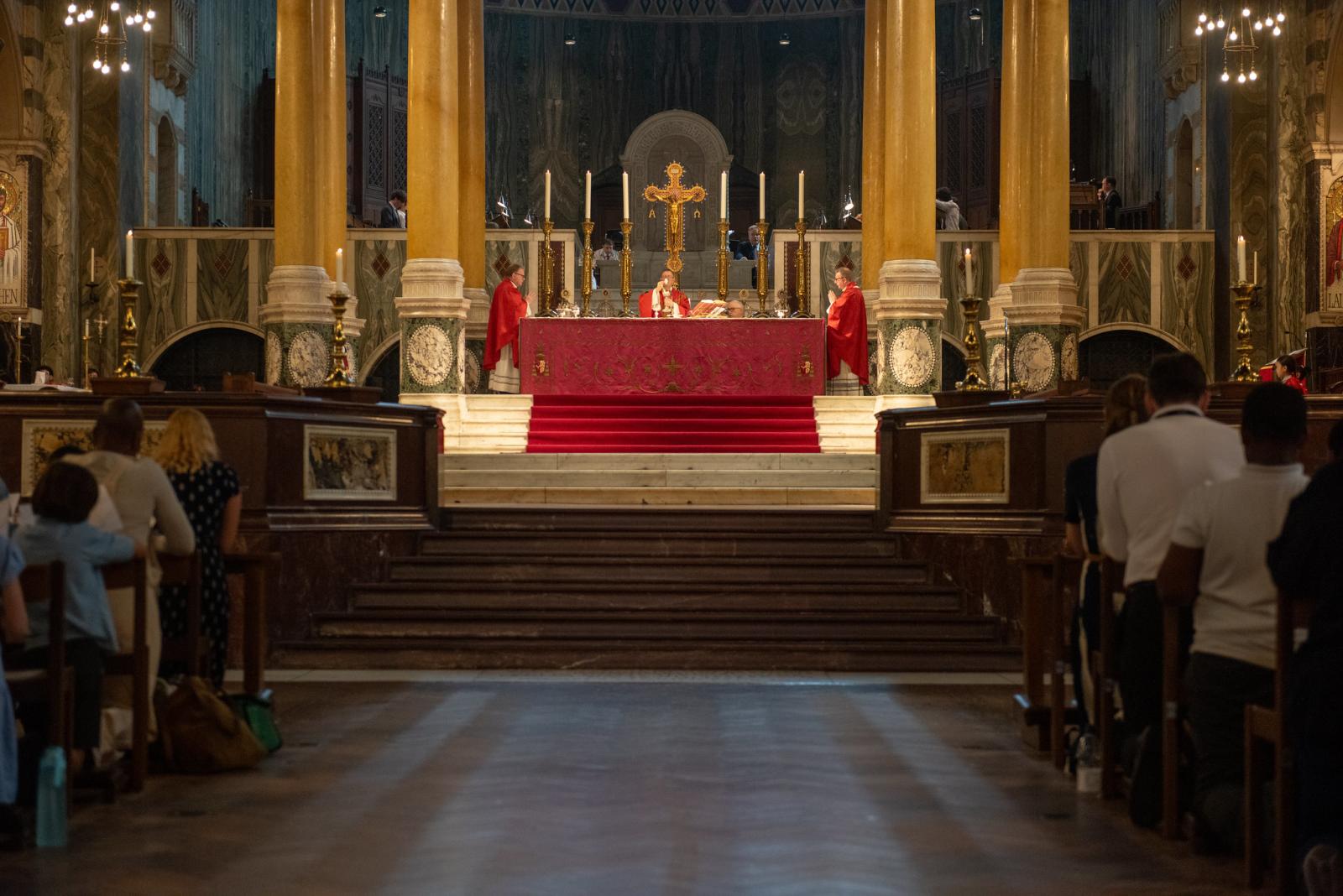Homily given at Westminster Cathedral on 27 June 2024
We celebrate the Feast of St John Southworth, priest and martyr, whose prayer joins with ours in heaven. The promise and glory of the martyrs shines through the first reading, ‘The souls of the righteous are in the hand of God’. They have found eternal rest and joy with God and the saints in heaven in the glory of the resurrection after bearing the cross of suffering and death. The closeness of Our Saint’s bodily remains with us in the Cathedral brings heaven and earth very close. We are almost touching the life of the saints in heaven through him. He touches us today and holds us in his faithful arms of love modelled on Jesus Christ.
‘Good people, I was born in Lancashire’ said John Southworth to the crowd who had come to witness his martyrdom at Tyburn gallows, on the NE corner of modern day Hyde Park. This is all we know of his origins. He was born about 1592. We know that he arrived at the seminary at Douai in Northern France on 14 July 1613 wanting to follow Jesus and become a priest but knowing that it would likely end in martyrdom. I have seen his signature recording his arrival in the Book of the Names of Seminarians now kept at St Edmund’s Ware. He used a false name of John Lee to prevent spies discovering he was there. He was ordained a priest on 14 April 1618.
As a priest returning to England, he would know the history of St Thomas More and St John Fisher martyred almost ninety years earlier and the stories of the English martyrs of the 16th century. They inspired him. Persecutions came in waves followed by lulls and so when he returned it was a period of calm. He ministered in London until 1624 when he returned to the Benedictine nuns in Brussels for a period of time. Two years later he returned to England and Lancashire for three years before he was arrested and sent to ‘The Clink’ in London near Southwark Cathedral. In 1630 he was deported to France.
St John Southworth wanted to be a priest serving the poor in London. This was his promise as priest and how he would fulfil the gospel calling ‘If any want to become my followers, let them deny themselves and take up their cross daily and follow me’. He was ready to lose his life for Christ.
He was smuggled back and began to minister as a priest in London during one of the worst plagues in history in 1636. The death toll was over 12,000. St John ministered in the Westminster area around these narrow streets near today’s Cathedral which were filled with poor people. We could apply the words of Shakespeare to the poverty of the people, ‘How shall your houseless heads and unfed sides, Your looped and window’d raggedness, defend you / From seasons such as these?’ He served all who were sick and dying.
From 1640 to 1654 with periods in prison, when he reached agreements with the warders to go out and serve the people, he continued his dedicated priesthood to the poor and the sick, ministering to their needs. He served faithfully relying of the grace of God as we heard in the Second Reading, ready to sacrifice himself as Jesus on the cross. He was hard pressed on every side, but not crushed, perplexed but not in despair, persecuted but not abandoned, struck down but not destroyed. He knew that God was at work within him. During the time of Oliver Cromwell, persecution of Catholics was very harsh. In 1654 was arrested, tried for treason, and then dragged on a hurdle from Newgate prison through Holborn to Tyburn gallows where he was hung, drawn and quartered.
After his death, his body was smuggled back to Douai and buried. It was hidden during the French revolution and only later discovered when a new road was being built in 1927 – somewhat like the discovery of the remains of King Richard III in a Leicester carpark. In 1930 he was brought with great liturgical ceremony to Westminster Cathedral for his final resting place and is here with us today.
Saint John Southworth whose dedication and faithful service to God and his people shines out like a light today helps the SJSAT through his prayer intercession and prayer. He inspires the Governors, Head and staff as the Good Shepherd to serve the students and have special care for the poorest and weakest. For the students, he is a teacher of the Catholic faith in season and out of season and an example of faithfulness and service to others unto death.
St John Southworth, pray for us.
Bishop John Sherrington
